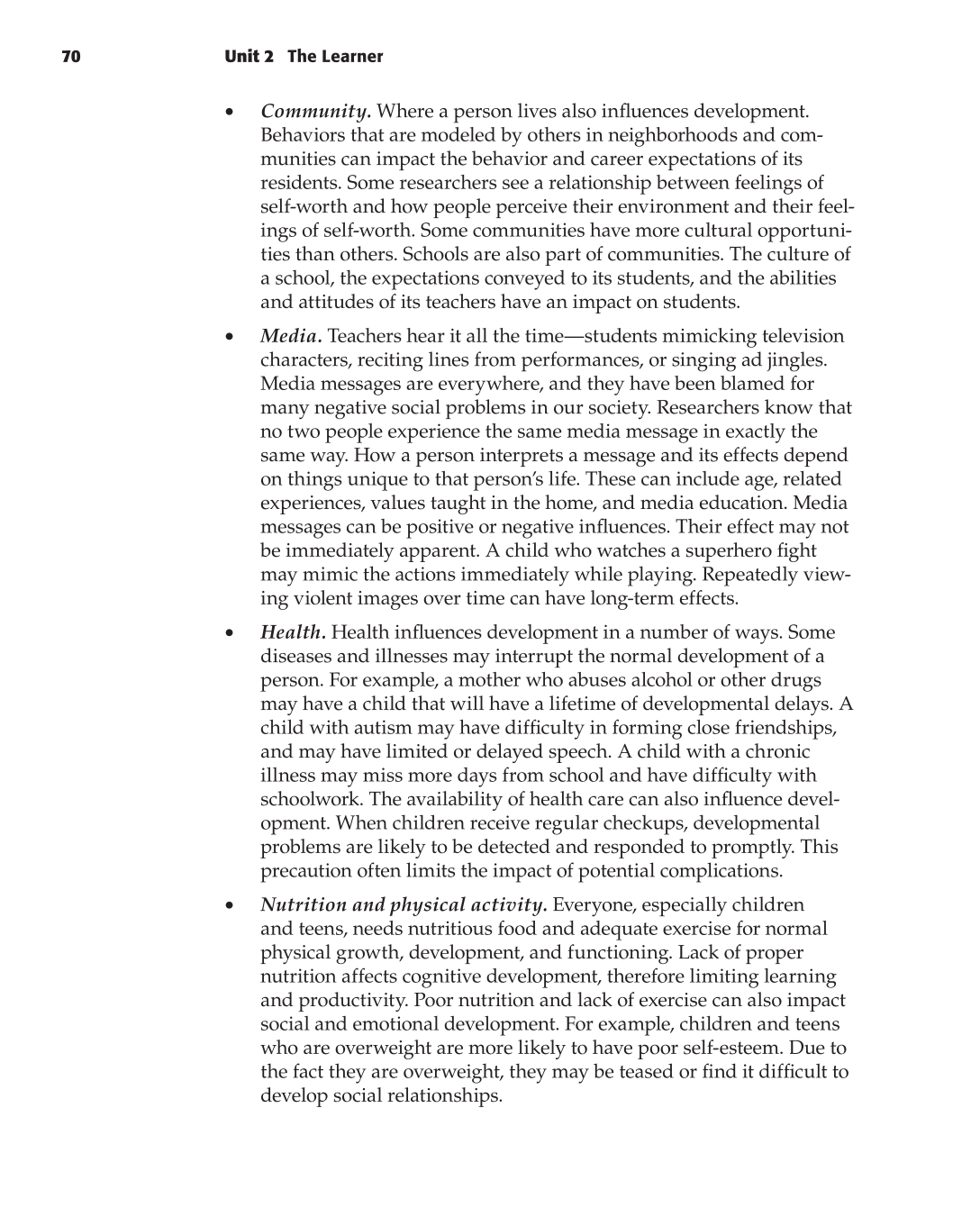70 Unit 2 The Learner
• Community. Where a person lives also infl uences development.
Behaviors that are modeled by others in neighborhoods and com-
munities can impact the behavior and career expectations of its
residents. Some researchers see a relationship between feelings of
self-worth and how people perceive their environment and their feel-
ings of self-worth. Some communities have more cultural opportuni-
ties than others. Schools are also part of communities. The culture of
a school, the expectations conveyed to its students, and the abilities
and attitudes of its teachers have an impact on students.
• Media. Teachers hear it all the time—students mimicking television
characters, reciting lines from performances, or singing ad jingles.
Media messages are everywhere, and they have been blamed for
many negative social problems in our society. Researchers know that
no two people experience the same media message in exactly the
same way. How a person interprets a message and its effects depend
on things unique to that person’s life. These can include age, related
experiences, values taught in the home, and media education. Media
messages can be positive or negative infl uences. Their effect may not
be immediately apparent. A child who watches a superhero fi ght
may mimic the actions immediately while playing. Repeatedly view-
ing violent images over time can have long-term effects.
• Health. Health infl uences development in a number of ways. Some
diseases and illnesses may interrupt the normal development of a
person. For example, a mother who abuses alcohol or other drugs
may have a child that will have a lifetime of developmental delays. A
child with autism may have diffi culty in forming close friendships,
and may have limited or delayed speech. A child with a chronic
illness may miss more days from school and have diffi culty with
schoolwork. The availability of health care can also infl uence devel-
opment. When children receive regular checkups, developmental
problems are likely to be detected and responded to promptly. This
precaution often limits the impact of potential complications.
• Nutrition and physical activity. Everyone, especially children
and teens, needs nutritious food and adequate exercise for normal
physical growth, development, and functioning. Lack of proper
nutrition affects cognitive development, therefore limiting learning
and productivity. Poor nutrition and lack of exercise can also impact
social and emotional development. For example, children and teens
who are overweight are more likely to have poor self-esteem. Due to
the fact they are overweight, they may be teased or fi nd it diffi cult to
develop social relationships.
